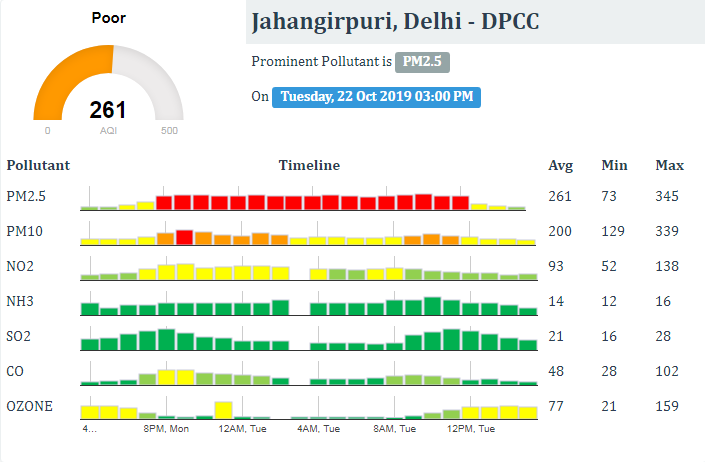The pollution data on Delhi's toxic Diwali air has thrown up a few confirmations.
First, that PM 2.5 and PM 10 levels showed that a couple of days before Diwali, the crackers were out in some neighbourhoods.
Second, that the Supreme Court order of limiting firecracker bursting to a time window of 8pm-10pm is perhaps not being heeded.
Third, the near inavailability of green crackers had sent made people choose to buy and burst conventional crackers.
The data put out by the Central Pollution Control Board (CPCB) showed that the pollution in the national capital, measured as the air quality index, spiked on the night of Diwali.
PM 2.5 and PM 10 are particulate matter that mix with the air from construction material, unpaved roads, fire-smoke, burning firecrackers and vehicular emissions. They are called so because of their size - one is less than 2.5 micrometer and the other less than 10 micrometer. PM 2.5 is considered more the lethal of the two because of its smallness that makes it easier to penetrate the lungs.
According to the data compiled by the Delhi Pollution Control Committee (DPCC), the average air quality in last 24 hours, that is October 27, in north Delhi’s Jahangirpuri—one of the many spots monitored by pollution monitoring agencies-- was measured at 375. The PM 2.5 level was 500 in the early hours of this morning. The agency rated the pollution as 'very poor'.
On October 22, the same Jahangirpuri station measured the overall AQI as 261, which is rated as ‘poor’ on the air pollution scale. These readings took into consideration vehicle pollution, crop burning if it happened in neighbouring states, construction work and all other kinds of particulate release into the atmosphere. Between October 22 and 28 only one thing changed - Diwali.
The spike in pollution levels in the city was evident during the days leading to Diwali, attesting to the far from perfect implementation of the restrictions on the cracker-bursting.
People also flouted the time window set by the Supreme Court for bursting crackers.
Last night’s data shows that the levels of PM 2.5 and PM 10 began to rise steeply after 8 pm o October 27 and continued to be high till the early hours of the morning. The level of PM 2.5 was recorded to be 113 just before 8 pm, but rose to 500 by 10 pm and hovered around that through the night.
Another reason for the people resorting, yet again, to the banned traditional crackers was the near absence of the so called green crackers in the market. As reported on this website earlier, the green crackers, developed by the central government’s CSIR-NEERI, were almost absent in markets. Shopkeepers who did manage to get them, had only a few varieties and at a more expensive rate. Buyers wanted a bigger bang for their buck.
But the foul air of Delhi may improve soon. The pollution, though higher than usual, was the lowest in last three years and is going to abate in the days to come.
“The rise in pollution is largely because of the crackers. But this is temporary. As the northwest wind gains strength the pollution will be scattered. The northwest wind is blowing at 10-15 kmph now and is set to increase up to 15-20 kmph. It’s not going to be back to normal but will hover in the category of moderate to poor at different places,” Mahesh Palawat, chief meteorologist at Skymet, told this website.

On October 22, the Jahangirpuri station measured the overall AQI as 261, which is rated as ‘poor’ on the air pollution scale. These readings took into consideration vehicle pollution, crop burning if it happened in neighbouring states, construction work and all other kinds of particulate release into the atmosphere. Between October 22 and 28 only one thing changed - Diwali. Source: Central Pollution Control Board











